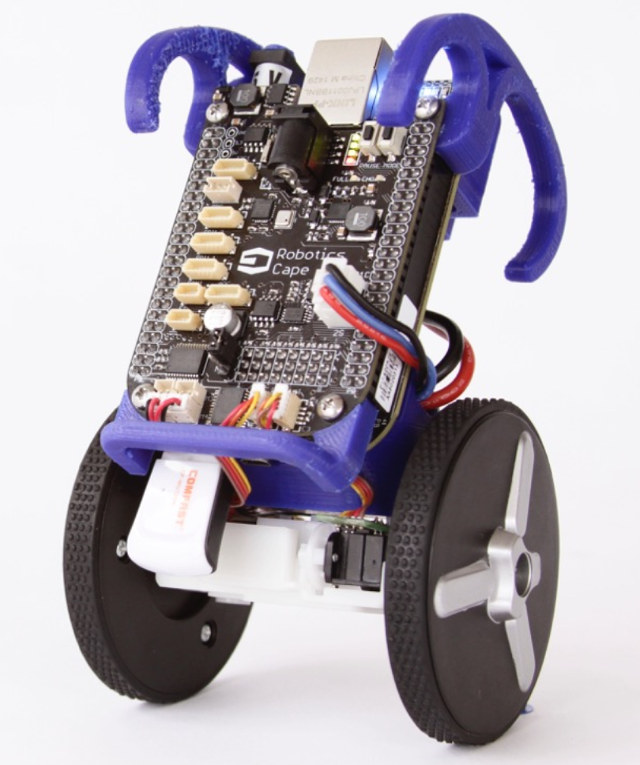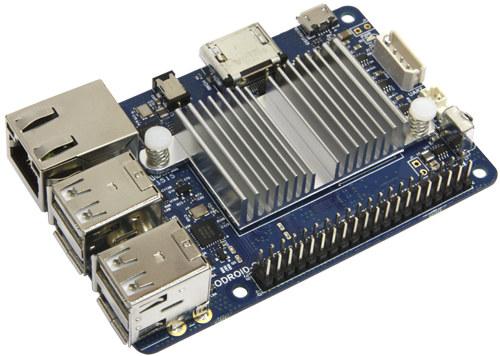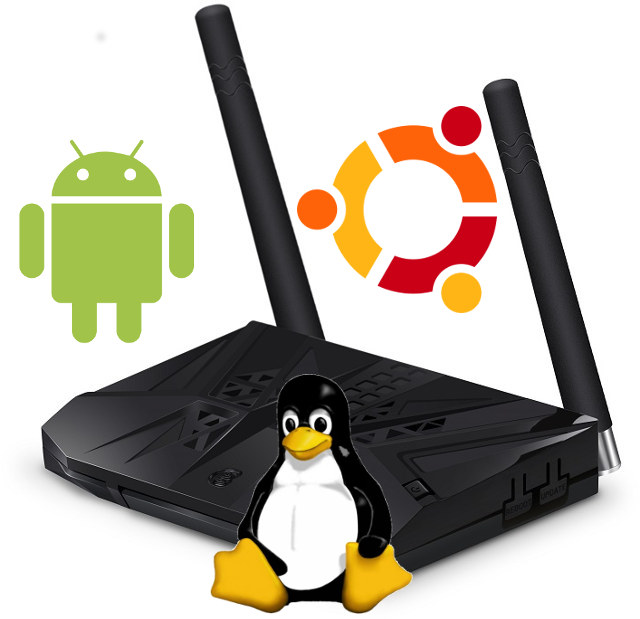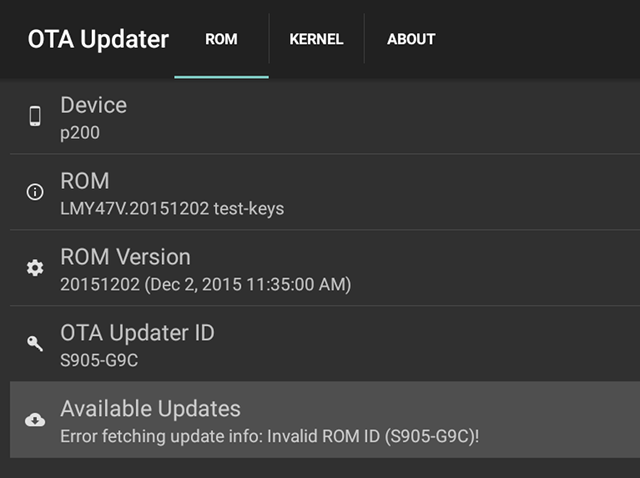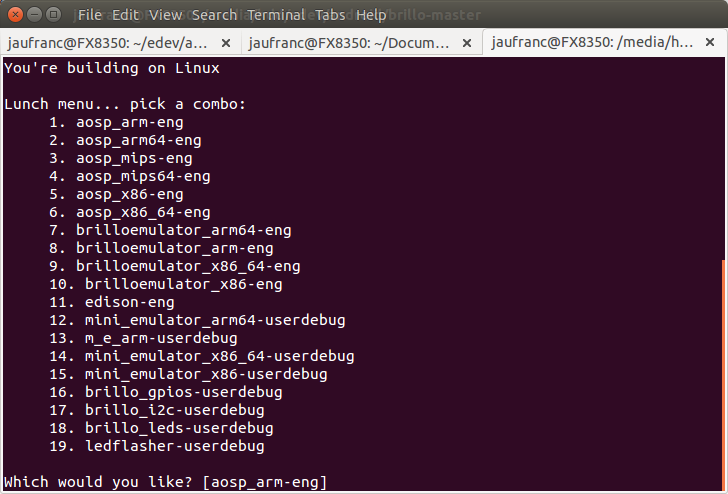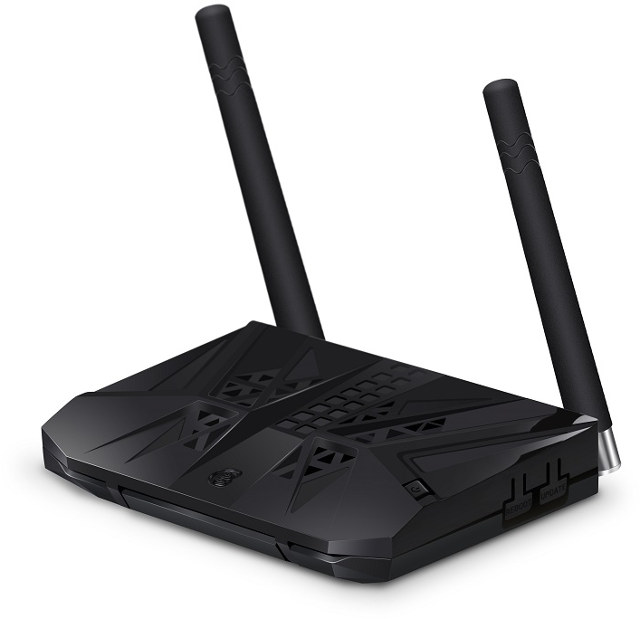Beagleboard.org organization already tried to go Blue with BeagleBone BlueSteel-Basic that was supposed to a the single board computer to be used by OEM to integrate into their design instead of BeagleBone Black development board. For some unknown reasons this never happened, but they’ve now reused the color to introduce BeagleBone Blue board designed for robotics and UAVs. BeagleBone Blue specifications: SoC – Texas Instruments Sitara AM3358 Cortex A8 @ 1 GHz + PowerVR SGX530 GPU System Memory – 512 MB DDR3 Storage – 4 GB 8-bit on-board flash storage Connectivity – 802.11 b/g/n, Bluetooth 4.0 LE USB – USB 2.0 client and host Motor Control – 8x 6V servo out, 4x DC motor out, 4x quad enc in Sensors – 9 axis IMU, barometer “Easy connect Interfaces” – GPS, DSM2 radio, UARTs, SPI, I2C, analog, buttons, LEDs Power / Battery – 2-cell LiPo support with balancing, 6-16V charger input […]
FOSDEM 2016 Schedule – Open Source Hardware and Software Event in Europe
FOSDEM (Free and Open Source Software Developers’ European Meeting) is a 2-day event that usually takes place on the first week-end of February in Brussels, but this year it will be on January 30-31. The event brings thousands of developers, hackers, and other person interested in open source technology who present their projects and share ideas. FOSDEM 2016 schedule is now available, and There will be 557 speakers, 612 events, and 50 tracks this year including 7 main tracks: Distros, Enterprise, Hardware, Communications, Miscellaneous, Office, Systems Administration, and Virtualization. So I’ve had a look at some of the talks, especially out of “Embedded, Mobile and Automotive” and “IoT” devrooms, and prepared my own virtual schedule although I won’t be able to attend. Saturday 10:30 – 10:55 – MIPS, the other side of the embedded by Alexjan Carraturo For many years MIPS processors have been involved in the embedded market, particularly […]
uRADMonitor Aims to Crowdsource Air Pollution Measurements Worldwide (Crowdfunding)
Some projects such as the World Air Quality Index project are already generating a pollution world map using data from the countries’ respective “Environmental Protection Agency (EPA)”, but a Romanian startup aims to allow individuals to monitor pollution around the world with their uRAMonitor project, effectively crowd-sourcing pollution monitoring. For this purpose, the company created environmental monitors with various features and price points, include the higher-emd Model D with the following specifications: Color LCD with touchscreen LND712 made in the USA for Alpha, Beta and Gamma Radiation Bosch BME680 to measure air temperature, barometric pressure, humidity and VOC (volatile organic compounds) Sharp photoelectric sensor to measure dust, pollen, soot, smoke and other particulate matter 1500mAh rechargeable battery for 8 hours of continuous use Wireless 802.11b/g/n connectivity mini USB connector for charging or data Internal audible alarm when pollution readings are high There’s also model A measuring temperature and radiation, connected […]
ODROID-C2 Amlogic S905 Development Board is in the Works
Hardkernel ODROID-C1 and later ODROID-C1+ boards, both based on Amlogic S805 SoC, have been a popular alternatives to Raspberry Pi 2 board this year. But now that Amlogic S905 quad core 64-bit ARM Cortex A53 processor has been available for a few months, people have been wondering whether the Korean company would launch an Amlogic S905 board, and it looks like ODROID-C2 might not be too far off based on firmware files on odroid.in website. The firmware includes a device tree file, which combined with other files give some clues about ODROID-C2 specifications: SoC – Amlogic S905 quad core Cortex A53 processor @ up to 2.0 GHz with penta-core (3+2) Mali-450MP GPU System Memory – 1GB RAM (in doc), 2GB RAM (in Device tree) Storage – 1x micro SD card Video Output – 1x HDMI out USB – 1x USB hub, 1x USB OTG I don’t have much more information […]
Light Biz OS Firmware, Android and Ubuntu Image, and Android SDK Released for GeekBox (RK3368)
GeekBox is an upcoming Android TV box based on Rockchip RK3368 octa-core processor that doubles as a system-on-module and development board. The company has now uploaded the Android 5.1 SDK, including Linux 3.10.79 kernel, on github. It’s not for the Android SDK for RK3368, but at least it’s not just an outdated tarball, and will hopefully be regularly updated directly on github. Beside the source code, the company also released three firmware image including Rockchip’s Light Biz OS desktop operating system based on Lollipop: Biz OS for GeekBox – V151208 (8th of December 2015) Android and Lubuntu dual boot image – V151129 (29th of November 2015) Android 5.1 image – V151129 (29th of November 2015) It’s quite possible those images will also work on other Rockchip RK3368 platform with some modifications, e.g. an updated device tree file for a given hardware. I’ve downloaded Biz OS adn the dual boot image, […]
OTA Updater is an Open Source App to Update Android Firmware
Yesterday, I received G9C TV box, but since Google Play is not exactly working perfectly, I decided to postpone the review until I get a new firmware. I did notice however that the firmware did not include Update&Backup app as found on K1 Plus, but instead an OTA Updater app, also called OTA Update Center, that happens to be an open source app with source code available on Github. Android already has a framework for OTA updates, but that app could make it easier implement OTA firmware updates for your own platform, or simply because you want to push your firmware, or as some people called them “ROM”, to multiple users. The software will allow you to update the “ROM” and kernel as long as both updates are configured correctly, which is apparently not the case for S905-G9C… The setup instructions are quite simple, explained on OTA Update Center website, […]
How to Build Brillo Operating System from Source Code and Run Brillo Emulator
Google formally launched Brillo operating system a few weeks ago. The new operating system is a stripped down version of Android that targets Internet of Things (IoT) applications, and more recently the company pushed the source code to their servers. So I’ve given it a try by checking out the code, building Brillo emulator for Intel/AMD, and running it in Ubuntu 14.04 64-bit. First you’ll need to retrieve the source code:
|
1 2 3 4 |
mkdir brillo-master cd brillo-master repo init -u https://android.googlesource.com/brillo/manifest -b master repo sync -j8 |
It took a few hours here with some errors the first time, so I tried again and I finally got the code a few hours later. Once this is done, set the build environment and configuration:
|
1 |
source build/envsetup.sh && lunch |
Lunch will bring a list of possible builds:
|
1 2 3 4 5 6 7 8 9 10 11 12 13 14 15 16 17 18 19 20 21 22 23 24 |
You're building on Linux Lunch menu... pick a combo: 1. aosp_arm-eng 2. aosp_arm64-eng 3. aosp_mips-eng 4. aosp_mips64-eng 5. aosp_x86-eng 6. aosp_x86_64-eng 7. brilloemulator_arm64-eng 8. brilloemulator_arm-eng 9. brilloemulator_x86_64-eng 10. brilloemulator_x86-eng 11. edison-eng 12. mini_emulator_arm64-userdebug 13. m_e_arm-userdebug 14. mini_emulator_x86_64-userdebug 15. mini_emulator_x86-userdebug 16. brillo_gpios-userdebug 17. brillo_i2c-userdebug 18. brillo_leds-userdebug 19. ledflasher-userdebug Which would you like? [aosp_arm-eng] 9 |
You could also run the “Brillo emulator” on ARM, and edison-eng must be the build for Intel Edison board. Now you can start the build:
|
1 |
make -j8 |
It has to complete 21491 different tasks, […]
GeekBox is a Hackable Android and Linux TV Box Powered by Rockchip RK3368 SoC
There are many Android TV boxes on the market based on Rockchip RK3368 processor, while I’m not aware of any development board based on the latest Rockchip octa-core processor, and Linux support is basically inexistent. One device may fill both gaps: GeekBox. This TV box can run both Android and Ubuntu Linux, while it’s easily disassembled to access expansion headers. The hardware specifications are a little higher-end than most Rockchip RK3368 TV boxes we’ve seen so far: SoC – Rockchip RK3368 octa core Cortex A53 processor @ 1.2 GHz with PowerVR G6110 GPU System Memory – 2GB LPDDR3@1600Mbps Storage – 16GB Samsung eMMC v5.0 flash + micro SD slot Video Output / Display I/F HDMI 2.0 up to 4K @ 60Hz with CEC support Display + touchscreen headers Audio Output – HDMI Connectivity – Gigabit Ethernet, 802.11 a/b/g/n + 802.11ac 2×2 MIMO @ 867 Mbps (AP6354 module), Bluetooth 4.1 USB […]


